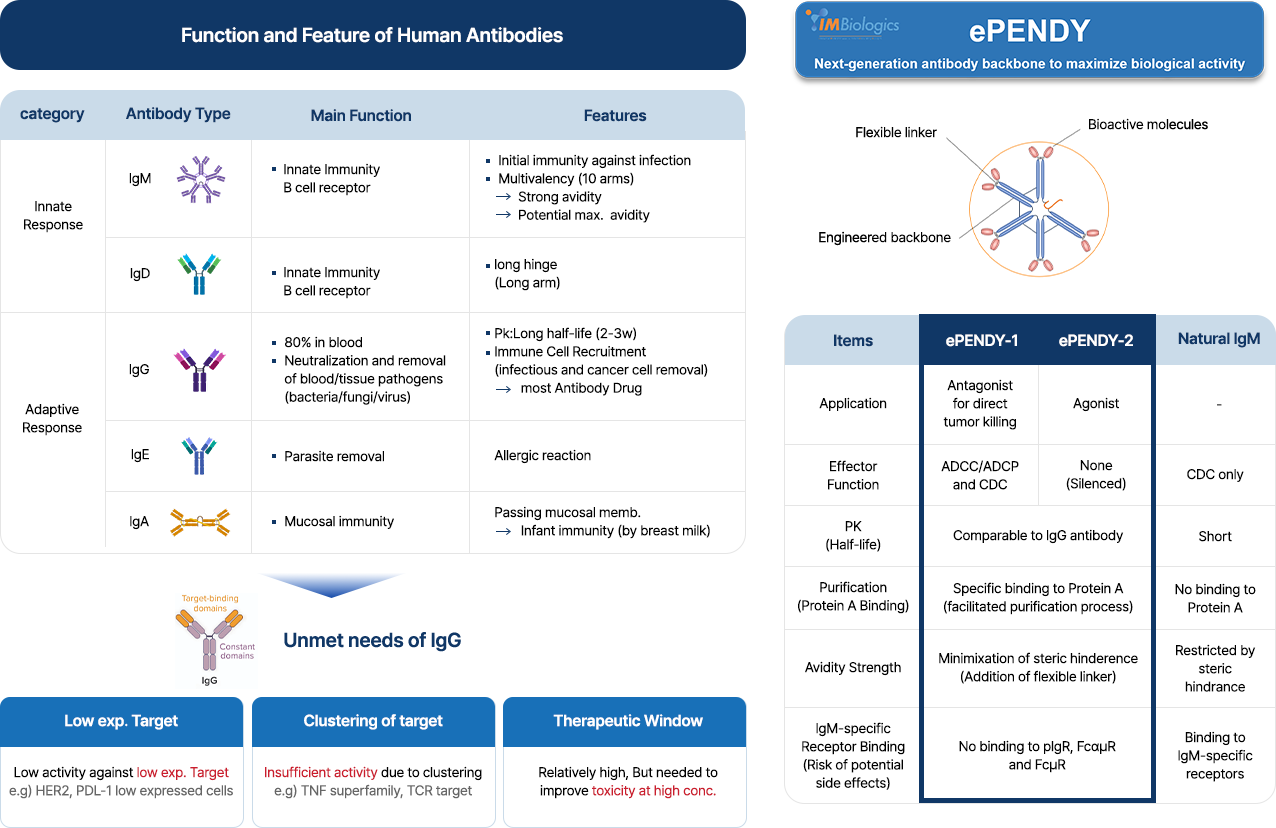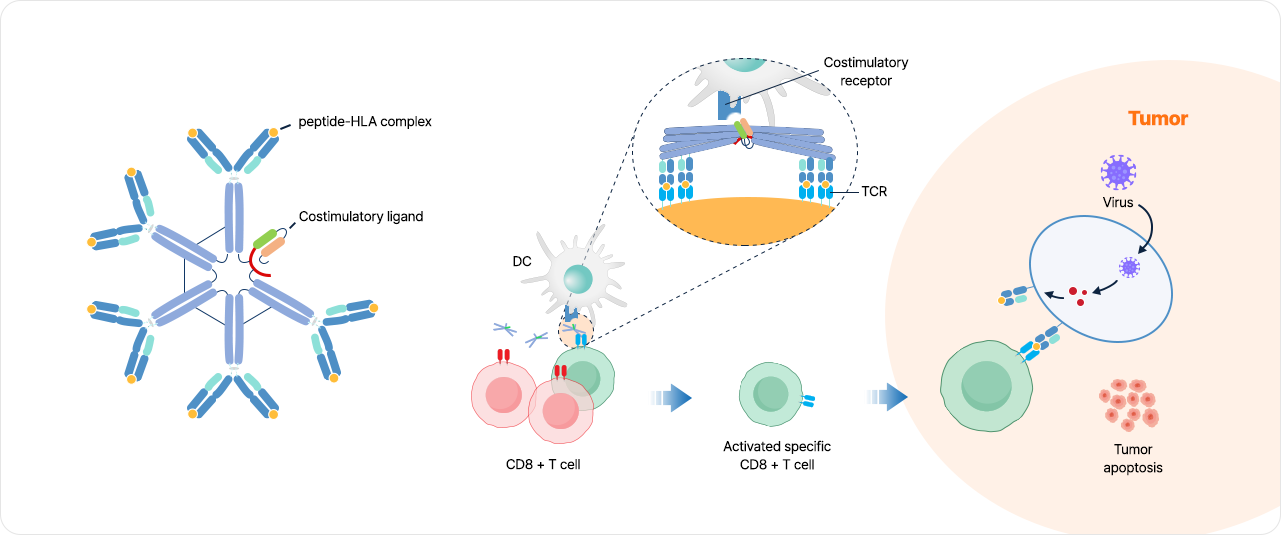ePENDY Technology
Innovative Medicines based on
ImmunoModulatory Biologics
Immunoglobulin G (IgG) is the most abundant antibody in the bloodstream, but it has limitations in avidity because it has only two variable domains that can bind to targets. Immunoglobulin M (IgM) has a pentameric structure with a total of 10 target-binding domains, resulting in higher avidity and potentially maximizing biological activity. However, compared to IgG, which is widely used as a therapeutic, IgM has a shorter half-life and lower stability in vivo, and it requires a more complex production process. Additionally, IgM's binding activity is limited by steric hindrance, lacks the strong ADCC effect of IgG, and there are concerns about adverse effects due to its relatively less studied interaction with Fcμ receptors. IMBiologics has developed the ePENDY (enhanced/engineered PENtameric boDY) platform technology through protein engineering to address the aforementioned weaknesses of IgM.

The ePENDY technology is a platform that demonstrates enhanced binding activity and effector functions compared to IgG. It exhibits particularly high activity against low-expression targets and targets that require clustering for activation, thereby distinguishing itself from IgG.

STAM.eP (Specific T cell Activation Modulator ePENDY) technology utilizes molecules that expose antigens to immune cells within the human immune system, enabling the selective activation of target-specific T cell populations. The STAM.eP technology addresses the issue of non-specific T cell activation, a common drawback in the field of T cell activation technologies and immuno-oncology therapies that have been actively researched recently. Additionally, by combining it with ePENDY technology, the efficacy of STAM technology can be maximized.
IMBiologics is developing IMB-401, a therapy that activates cervical/head and neck cancer antigen-specific T cells, and IMB-402, a therapy for glioblastoma, based on the STAM ePENDY technology.





